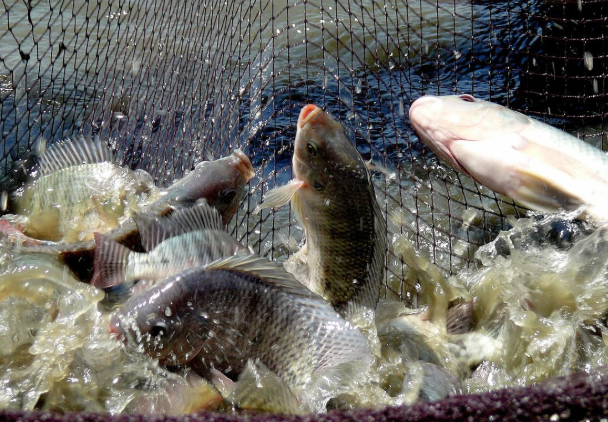(seafood.vasep.com.vn) The integrated farming model of whiteleg shrimp and tilapia is gaining ground in Tra Vinh province, offering high profitability and greater sustainability for local aquaculture producers.

Shrimp farming faces growing hurdles
Aquaculture remains a key economic sector for Tra Vinh, which has been investing heavily in infrastructure. The province has completed 11 key projects and plans to implement 14 more between 2026 and 2030, with a total investment of VND 1.9 trillion.
In 2024, Tra Vinh’s total aquaculture area reached 62,000 hectares. Of this, 33,331 hectares were used for brackish water shrimp, yielding 94,251 tons — including 84,547 tons of whiteleg shrimp and 9,704 tons of black tiger shrimp. The province ranked sixth in the Mekong Delta in both farming area and output, achieving 99.42% of its annual target, up 6.4% from 2023.
Tilapia emerges as a promising alternative
Tilapia is increasingly seen as a potential alternative in Tra Vinh's aquaculture sector. Since 2023, farmers have actively introduced tilapia into brackish water ponds previously used for shrimp. The model has shown strong development, particularly in polyculture systems.
A typical 1-hectare integrated farm can yield 200,000–300,000 shrimp and 600,000–700,000 tilapia, generating an estimated profit of VND 500 million per hectare. Of that, shrimp contributes around VND 150 million. Intensive tilapia monoculture can generate even higher profits—up to twice that of the mixed model.
Tilapia is easier to manage than shrimp, with lower water quality requirements. Additionally, water from tilapia ponds can be reused for shrimp farming after treatment, helping reduce costs and disease risks.
According to the Tra Vinh Sub-Department of Fisheries, 46 households are currently farming tilapia for export, covering a total area of 106 hectares, mainly in Cau Ngang, Tra Cu, and Chau Thanh districts. Cuu Long Seafood Joint Stock Company is also cultivating more than 60 hectares and expects to harvest around 500 tons in May alone.
However, local hatcheries still rely on seed stock from other provinces. To support sector expansion, there is an urgent need to develop high-quality tilapia broodstock production within Tra Vinh.
Nguyen Tri Thong, Deputy Director of the Cau Ngang Agricultural Technical Service Center, noted that export demand for tilapia is rising, leading to better market value. Still, farmers must be cautious when selecting seed sources and tilapia strains, as a wide variety of imported strains are now available.
To ensure long-term success, a closed value chain—from quality seed and feed supply to product marketing—is essential. Farmers are also encouraged to follow strict technical guidelines recommended by buyers and associated enterprises.
Tra Vinh is pushing for a modern, sustainable transformation of its agricultural sector. Diversifying farmed species is seen as a key strategy to improve economic efficiency, boost farmer incomes, and support the province's broader socio-economic development goals.